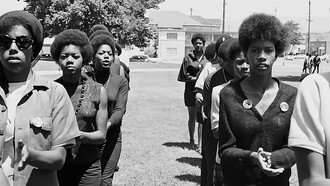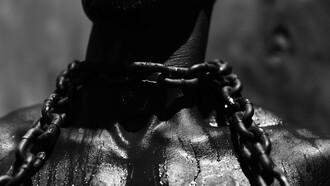This year marks the 20th anniversary of the illegal American invasion and occupation of Iraq. While the US Senate has recently voted to repeal the authorization for use of military force (AUMF) that permitted American presidents in 1991 and 2003 to launch invasions of Iraq, irreversible damage was done during the occupations to antiquities, monuments, and cultural heritage across the country. Tens of thousands of antiquities were smuggled out of the country in the wake of the 2003 invasion and, although thousands have since been recovered and returned, some are lost forever.
The 20th anniversary of the invasion provides an opportunity for reflection on these events. But let me suggest that we pull the spotlight away from the Americans for once and highlight efforts currently underway in Iraq for the conservation and management of its vulnerable cultural heritage. In April 2023 I sat down with Muntadher Aloda, a young archaeologist and field researcher working for the State Board of Antiquities and Heritage (SBAH) in southern Iraq. He graciously updated me on the work he and his colleagues are conducting with the aim of preserving Iraq’s cultural wealth for future generations.
For those who don’t know, what is Iraq’s State Board of Antiquities and Heritage and what does it do?
It is the first institution responsible for protecting, maintaining, preserving, inventorying, and documenting archaeological, heritage and historical sites around Iraq, and issuing decisions regarding contracts with foreign and local missions based on Iraq’s Antiquities and Heritage Law No. 55 issued in 2002. This institution includes a group of departments, including the Department of Investigations and Excavations, Archives, Museums, Remote Sensing, Human Resources, the Legal Department, and the Public Relations Department. Also, it is responsible for the work of antiquities and heritage departments and museums throughout Iraq. Inside the SBAH, all artifacts discovered throughout Iraq, extracted from archaeological sites in Iraq, or artifacts recovered from different countries, are stored.
Where do you mainly work in the country?
In the ancient city of Ur, one of the sites listed on the World Heritage List. The site is in southern Iraq, in the Dhi Qar governorate.
What projects are you currently working on?
I am working on inventorying and documenting Iraqi heritage, which is represented by historical and heritage buildings that date back to different periods of Iraq's history, with the support of many European institutions. I am also engaged in excavation work with the Italian excavation mission in Eridu, one of the archaeological sites listed on the World Heritage List. My participation in the excavations, as a representative of the SBAH, is to assist with the excavation procedures and future strategic plans to raise cultural awareness among the Iraqi community about the archaeological excavations in Eridu.
What was the most interesting or exciting project you’ve worked on?
For me, most of the projects I have worked on are important and interesting. But what attracted me the most was the documentation of heritage buildings in the provinces of Dhi Qar and Maysan. I discovered many important things about the cultural diversity that has characterized Iraq for a long time. For example, there are Christian, Muslim, Mandaean, and other sects and religions that used to live together side by side. In addition, the communities in these two provinces still cling to their heritage and places that have many stories, and they long to return to those days.
Do the heritage sites of southern Iraq have any special or unique conservation needs?
Sites in southern Iraq, especially since the ‘90s of the last century, have suffered from a lack of protection and preservation. Iraq, based on the statistics provided by Abdulameer al-Hamdani (Iraqi archaeologist and current Minister of Culture), has more than 15,000 archaeological sites throughout the country. So, to protect and preserve all these sites, we need large financial support, a solid strategy, consultations by international bodies, and supervision by relevant international organizations.
What’s the biggest threat to heritage conservation and restoration in Iraq?
There are two parts to answer to this question. Among the things that threaten the Iraqi cultural heritage are natural factors, including climatic changes, especially in recent years, as Iraq suffers from desertification and a shortage of water supplies that Iraq gets from Turkey and Iran. These things made it difficult to control the rapid changes that threaten heritage sites, especially in southern Iraq. As temperatures rose, desertification increased, and sand dunes increased, which caused the decline of the urban landscape surrounding those sites. The other part is restoration. To restore these sites, we need experts specialized in the field of maintenance and restoration, in cooperation with specialists in the field of protection and preservation, and in coordination with European and American universities.
Is there anything else you want people reading this to know?
I would like to add one more thing that is probably important. At the present time, we are witnessing a great demand by the Iraqi masses to visit the archaeological sites listed on the World Heritage List, but it is unfortunate that these sites still do not have an integrated management plan to control the number of visitors, plus these sites suffer from a lack of funding, capable human resources, and lack of experience. Also, those sites lack electronic and technological work and the close monitoring followed in many other countries. Therefore, we always witness chaos in admitting visitors, enforcing safety decisions, and preserving cultural property, which poses a great threat to the safety of most sites. So, in order to address these issues, all of us (ministries, authorities, concerned companies, specialized organizations, and researchers) need to unite and raise awareness among the community through special programs and projects to preserve archaeological sites and their cultural values for subsequent generations.
Aloda has recently developed a digital geodatabase to document the vulnerability of historic buildings in Dhi Qar and Maysan. He also, in his capacity with the UNESCO-UNOCT joint project on the prevention of violent extremism through youth empowerment, has developed a series of on-site workshops and trainings to document deterioration and threats to conservation. You can read more about his work with UNESCO here.















